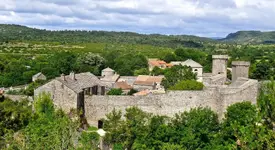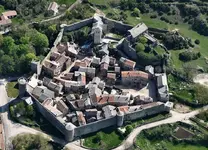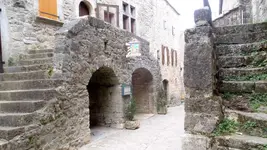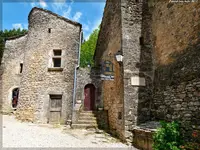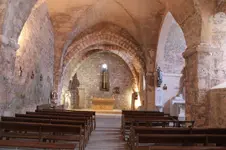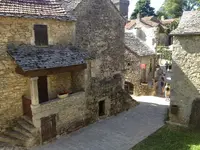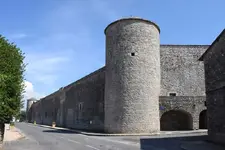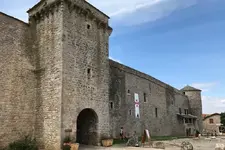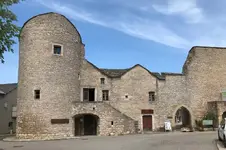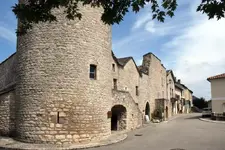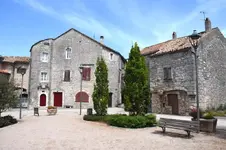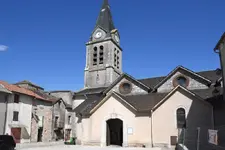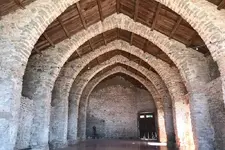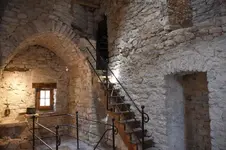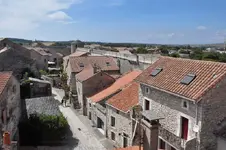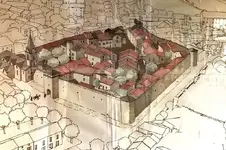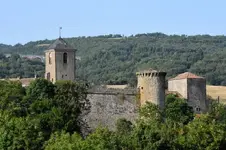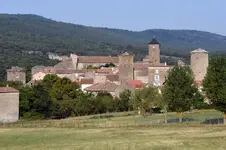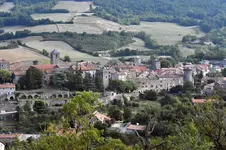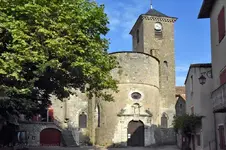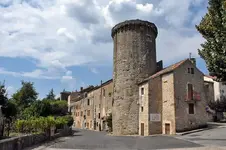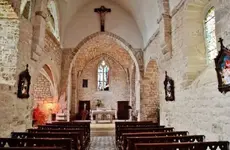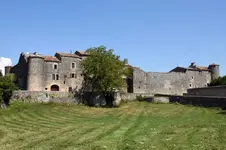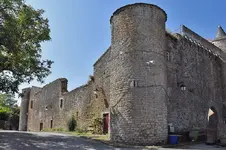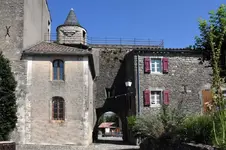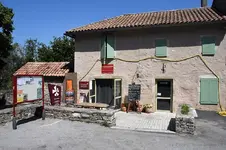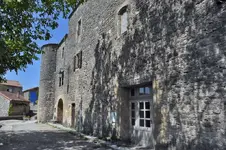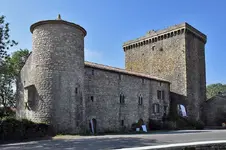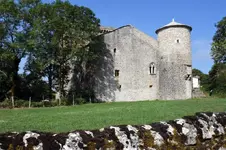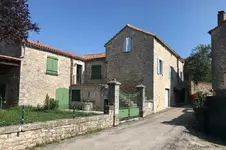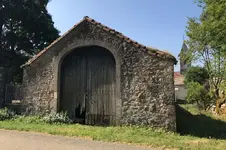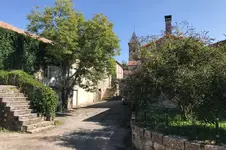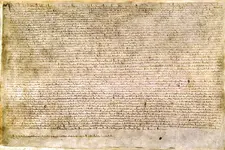Gidday TC there is no simple answer to this as it involved the complex geopolitical situation happening at the time
One book you will find interesting"Historical Notes On The Trial Against The Templars" by Barbara Frale. Dr. Barbara Frale is an historian on staff at the Vatican Secret Archives and a specialist on the Templars, the crusades, and the papacy. She earned her Ph.D. at the University of Venice. She lives in Viterbo, Italy
She tells of the three main characters in this story. First you have Philip, IV, king of France. Philip has always been portrayed as a villain in this story, and Dr. Frale does nothing to attempt to change this. In fact, from her perspective, he is the number one bad guy.
Next, you have Pope Clement, V. I have seen him portrayed as an evil despot, a weak and helpless puppet, a willing co-conspirator, and a fool, but Dr. Frale gives us a new opinion to consider; one I have not seen before.
Finally, we have not so much the man, Jacques DeMolay but the Order of the Temple as a whole as our third main character. In the end, it seems to me that Dr. Frale portrays them almost as you would an innocent bystander.
Next, we will begin to take a really close look at King Phillip, where he came from, who he was, what motivated him, the events which influenced him, and what appears to have been his objectives. Motives are difficult to determine. A wise man once said that we tend to judge others by their actions and ourselves by our motives. Try to keep an open mind as we attempt to get into the minds of these players.
Philip IV (the Fair) of France. There is one thing about this fellow; no matter whose account you read, he was a bad guy. He was apparently a handsome devil to have been called "the Fair", but it appears that his beauty was only skin deep. His family had been involved in the crusades from the very beginning as far back as Louis VII' s participation in the second crusade.
Louis VII had managed to obtain the support of Bernard of Clairvaux for this crusade, the same St. Bernard who was instrumental in the legitimization of the early Templars. Louis was accompanied on this crusade by the Master of the Temple, the ranking Templar officer in France. During this crusade, Louis ran out of money, and the Templars financed the remainder of the Crusade for him. In the process they became, for all practical purposes, the treasury of France. They were so good at this that they increased the revenues of the real estate holdings of French King Philip II by an estimated 120 percent. In the long run, this turned out to be a bad move.
Louis VII's great grandson, Louis IX, was Philip IV's grandfather and apparently was idolized by Philip the Fair. Louis IX was a participant and leader of the seventh and eighth crusades and apparently a very devout Christian and servant of the Church. He was captured on at least one occasion and was ransomed by the Templars although somewhat reluctantly and under duress. It appears that Philip IV wanted to follow in his grandfather's footsteps and sort of pick up where he left off. He aspired to the leadership of all Europe and to the title of "Defender of the One True Faith."
In reality, he lacked the finances and power to pull this off. By then, the Templars owned an estimated 9,000 manors, all profitable farming operations, and most of them in France. Because of the Templar relationship with the Church, none of these were taxable by the King.
Philip had an advisor and co-conspirator in the person of Guillame de Nogaret, the Keeper of the Seals who appears to have been as fully ambitious and fanatically religious as Philip. In 1294, Philip began his conquest by attacking and trying to seize the assets of the fiefdom of Gascony belonging to King Edward I of England. This war cost both sides so much that they both decided to tax the clergy. This taxation, of course, created a problem between King Philip and the Church in the person of Pope Boniface VIII who threatened to excommunicate him. Since an excommunicated King could hardly claim the title of "Defender of the One True Faith", this constituted a major roadblock to Philip's plans.
Philip retaliated by taking the position that his ancestors were more Christian than the Papal line having been ordained directly by God and by taking the position that a King was completely sovereign in his own territory and not subject to any other authority. He then sent a delegation of French clergy to the Pope that assured the Pontif that the King would not interfere with the authority of the Church and convinced him to allow taxation of the clergy during times of national emergency.
They also managed to convince the Pope to canonize Louis IX, thus making him truly Philip's "sainted" grandfather. This did not resolve the issue because in 1301, Bishop Bernard Saisset spoke out against Philip's abuses of the clergy and was sentenced to death for treason by the King. Philip subsequently proposed that the Pope be deposed by the Church.
Pope Boniface then drew up the necessary paperwork to excommunicate the King, but before the Pope published the document, the King sent soldiers who assaulted him and attempted to kidnap him and take him back to Paris for trial.
The kidnapping was thwarted by the locals, and the Pope was rescued but died in Rome shortly thereafter. Unfortunately for Philip, the excommunication documents were lost (presumably not destroyed) in the fray, and he had to live with the fact that they might be found and enforced at any time.
Pope Clement V was elected as a compromise candidate between the French Crown who wanted a separate French Church under the control of the King and the Roman Church, but could not take office until the leader of the Roman contingent died because he refused to certify Cement's election. Immediately, Philip bullied the Pope into being crowned in Lyon rather than in Toulouse, the site chosen by the Pope. He was then pressured into remaining in France rather than presiding from Rome.
At the coronation, the King told Clement of rumors of heresy about the Templars and asked him to investigate. He also began his own "investigation" and constantly fed condemning "evidence" to the Pope.
In 1306, Philip, again facing financial difficulties, devalued his currency which created a rebellion, and he took refuge in the Tower of the Temple in Paris under the protection of the Templars; another mistake on the part of our ancient brethren. It is thought that his time spent in the Tower gave him opportunity to see firsthand the riches of the Templars to whom he already owed a great financial debt.
He knew the money was really there. He ordered the Templar in charge to loan him an enormous amount without collateral and received the loan. When the books were later audited by DeMolay, the Grand Master expelled the offending loan officer from the Order.
It seems pretty clear to me that Philip IV was motivated by a desire to follow in his grandfather's footsteps and be accepted as the devout and indisputable leader of the Christian world. This required money, and he apparently would stop at nothing to get the money he needed to accomplish his ambitions.
As you know, the Templars were originally presumably founded to protect Christian pilgrims on their pilgrimages to the holy city of Jerusalem. Although the Islamic rulers of Jerusalem as well as the Christians had at that time, a policy that allowed these pilgrimages, the pilgrims were apparently often attacked by bands of robbers as they neared Jerusalem. As the region fell more securely under Christian control and as further crusades were launched, the Templars gradually shifted into the role of Christian warriors and crusaders.
This new role at first created a dilemma because of the conflict between the killing of one's enemies and the long established Christian teaching of passivism or turning the other cheek. Their friend, St. Bernard of Clairvaux, assisted them in this respect by formulating the "doctrine" that killing in defense of the Christian religion was not in conflict with the early Christian teaching and practice of what we now call "non-violence."
Subsequently, they took an active part in most of the crusades in the Holy Land or Outremer. The Hospitalers started out providing medical care and also evolved into crusaders, but retained a medical mission as well. In order to support their military efforts, the Templars developed a very large network of agricultural and banking businesses. They began to admit personnel with skills in business, agriculture, building, and manufacturing and made a good deal of money. Remember however, that all this was strictly in support of the central mission of conquering and holding the city of Jerusalem and surrounding areas.
When Acre fell, they lost their last foothold in Palestine and also their Grand Master. The ones who survived took refuge on Cyprus and then elected a new Grand Master Thibaud Gaudin who died within a year and then another Grand Master in the person of Jacques DeMolay. Remember that DeMolay was an older knight from the warrior Templars, not from the banking or business side of the house.
With this catastrophic defeat, the Templars lost their entire reason for being. They had to sit and do nothing, find another war, merge with the Hospitalers, or find another mission in life. Their boss, the Pope, had been making noises about merging them with the Hospitalers, and neither group much liked that idea, so when the Pope asked DeMolay to come to France to discuss another crusade, DeMolay jumped at the chance ready to help finance this new crusade. What do you suppose ever became of that?
King Phillip had been plotting against the Templars for some time before the surprise attack and arrest on Friday, October 13, 1307. He had planted covert spies among them as members who fed him "evidence" to be used in the public campaign against the order.
DeMolay had expelled the treasurer of the Paris Temple for providing an unauthorized loan to the King of France. The King tried to persuade DeMolay to reverse his decision and having failed, persuaded the Pope to order his reinstatement. This proved that DeMolay was not untouchable.
After the King ordered the raid, he started a public campaign to incite the general population to force the Pope to suppress the order. The "evidence" presented was almost all completely false. It was particularly scandalous and shocking but simply not true. He then used the inquisition to torture the Templars and to extort confessions from the captive knights. The Templars had been subject to the inquisition since the time of the crusade against the Cathars.
The Pope, realizing that he was losing control of the situation demanded to personally interrogate DeMolay, but the King deliberately kept the Grand Master away from him. The Pope then sent his own lawyers to Notre Dame in Paris to conduct an interrogation during which DeMolay retracted prior confessions which he insisted were given under torture. After receiving the report from his commission, the Pope ordered an immediate stop to all further action against the Templars and again demanded that the King turn DeMolay over to him at Poitiers.
Finally, Phillip sent a caravan containing seventy prisoners to the Pope. The prisoners were composed of the top Templar leaders in custody and a "select group of Templars and excommunicated fugitives." No doubt, these were ex-Templars who had been expelled from the order and may even have included some of the spies the King had planted for that purpose. Curiously, when the caravan was only part way there, the wagons containing the top Templar leaders including DeMolay himself were diverted to Chinon and never arrived at the Pope's location.
The Pope never personally questioned DeMolay, but found the order innocent of nearly all the charges and granted absolution for the others. The trials were concluded on August 20, 1308, but DeMolay was not released.In another surprise move on March 18, 1314, the King seized DeMolay and had him burned at the stake for heresy, a judgment and sentence he was not empowered to make.
At the time of the trials, the order was only around two hundred years old. The Templars, after a two hundred year tradition of heroic warfare, prosperous business, exemplary honor and chivalry, and devoted service to their religion, had come to an ignominious end.
But perhaps history is little too harsh in demonizing Phillip the fair? Dr. Barbara Frale over looks the the impact the English Crown was facing and the Fact Richard 2nd was so broke too from wars with France and with the war between the House of York and the house of Lancaster. Richards power was in constant danger. He even hocked his own crown as collateral to pay the loan back to the Templars. At the same time he needed to pay to keep his barons onside.
Both the King of France and England broke from being at war with each other and both fighting internal divisions in both countries. And a potential threat having with in their own borders a disciplined fighting Templar force that could decide to side with the enemy. Both kings distrusted the Templars but needed their money and no way of paying the Templars back. So its not hard to see why Phillip the fair wanted the Templars out of the way and easy to see why Richard the 2nd with his problems saw a chance to cash grab Templar assets.
Crow
